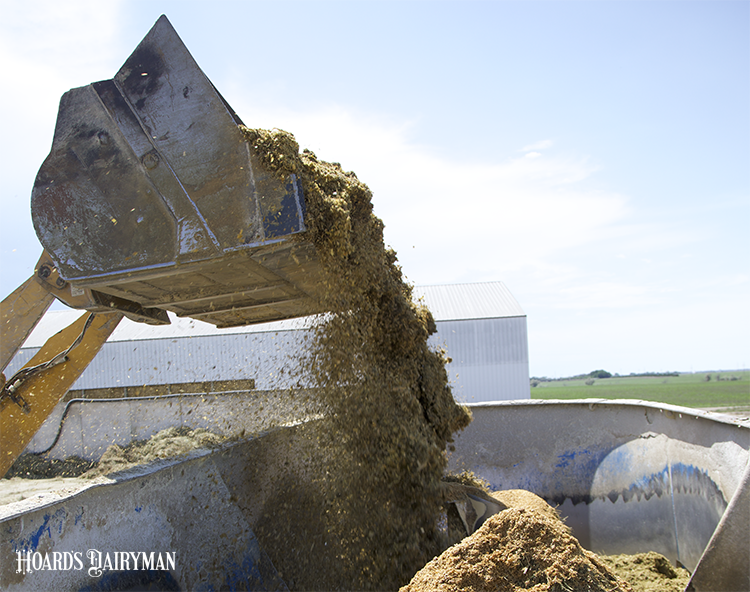
Feed expenses make up more than half the cost of producing milk on today’s dairy farms. While it is tempting to cut feed costs, University of Illinois’ Mike Hutjens cautions against making ration changes that hinder milk production. Instead, he said to “control the controllable costs” without sacrificing milk.
“High-producing cows are the most efficient and most profitable,” he said during the April Hoard’s Dairyman webinar. “I never want to give up milk.”
To do this, Hutjens offered 10 recommendations for cutting feed costs. Several points focused on feed ingredients and feed quality, factors that certainly affect milk production. Another pair of recommendations centered on feed storage and delivery.
One guideline was to reduce losses from feed shrink. “This is a big one,” Hutjens said. He noted that shrink losses range from 6% to 8% or more per day. That can cost 45 to 60 cents per cow per day, or even higher with the current feed values.
Hutjens said there are “visible” shrink losses, including yield lost in the field, wind losses during harvest and feed mixing, bird consumption, and poor storage conditions. He also listed causes of shrink he considered “invisible,” such as fermentation losses, feed quality variation, the inaccurate addition of ingredients, or feeding the wrong diet to a pen of cows.
These losses all add up and make every pound of feed more expensive. “Dry matter costs money,” he reminded.
Another Hutjens’ recommendation was feedbunk management. “Opportunities abound here,” he said.
He encouraged farmers to provide 30 inches of bunk space per cow. Target 2% to 3% weigh backs (feed refusals) for lactating groups and 3% to 5% in fresh cow groups. He said to provide a fresh diet at a consistent time, preferably after each milking. Feed should be pushed in one hour before milking and every two to four hours after milking to ensure it is accessible to the cows.
Hutjens said to monitor for signs of sorting. This includes evidence of long forage particles and cows moving around feed to sort out concentrates. He also said to evaluate for build-up of film or odors on the feedbunk surface and to consider sealing the surface with plastic, tile, or paint.
Another key to reducing expenses is tracking feed costs. “How can we manage our costs if we don’t know where we are at?” Hutjens asked rhetorically. He encouraged farms to calculate their feed cost per pound, feed cost per hundredweight, income over feed costs, and feed efficiency.
“This is powerful data,” he stated.
To hear Hutjens’ full list of recommendations, please watch the April Hoard’s Dairyman webinar, “Feed costs: Ten opportunities for savings.” This webinar was sponsored by Kuhn.








